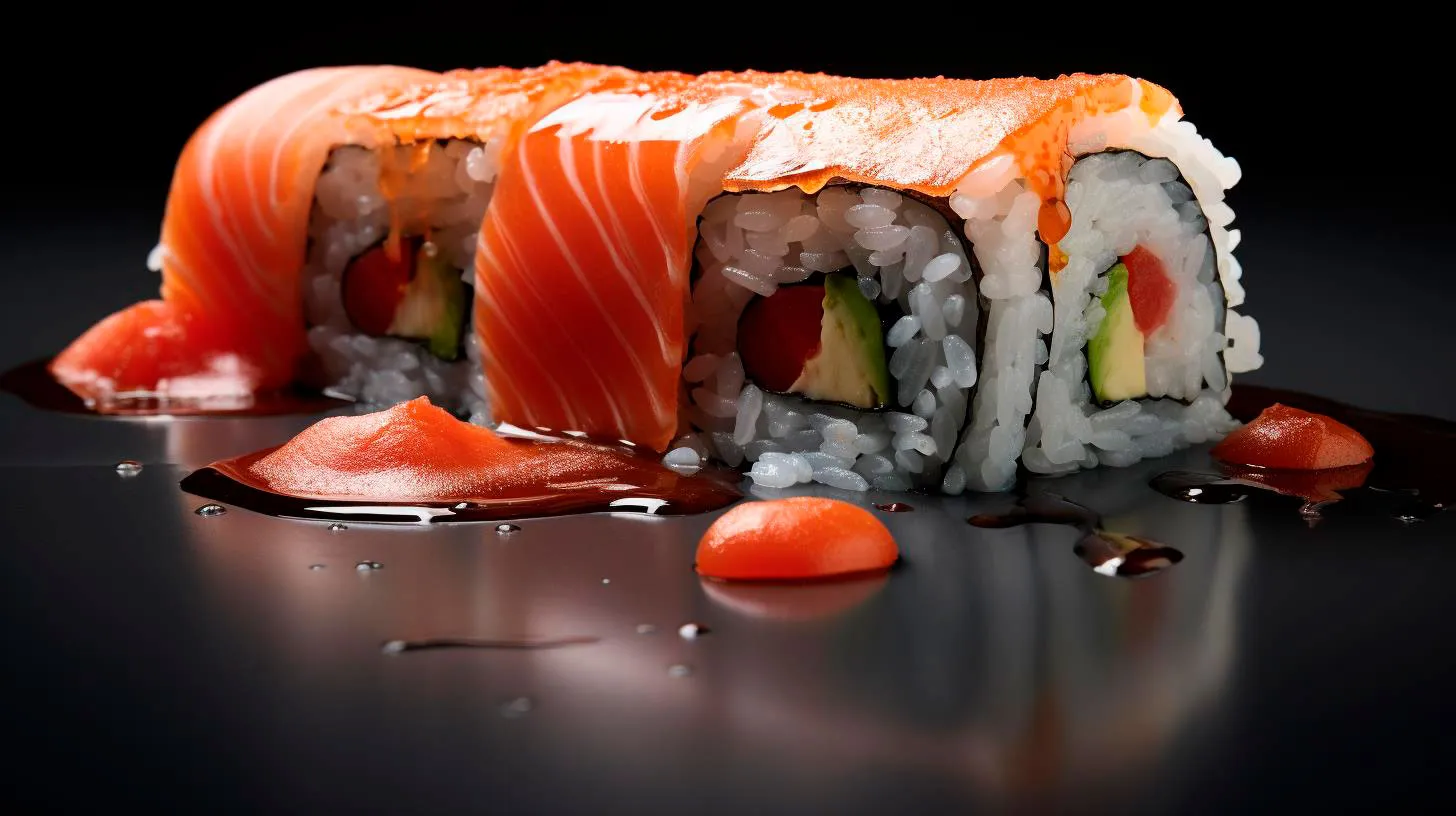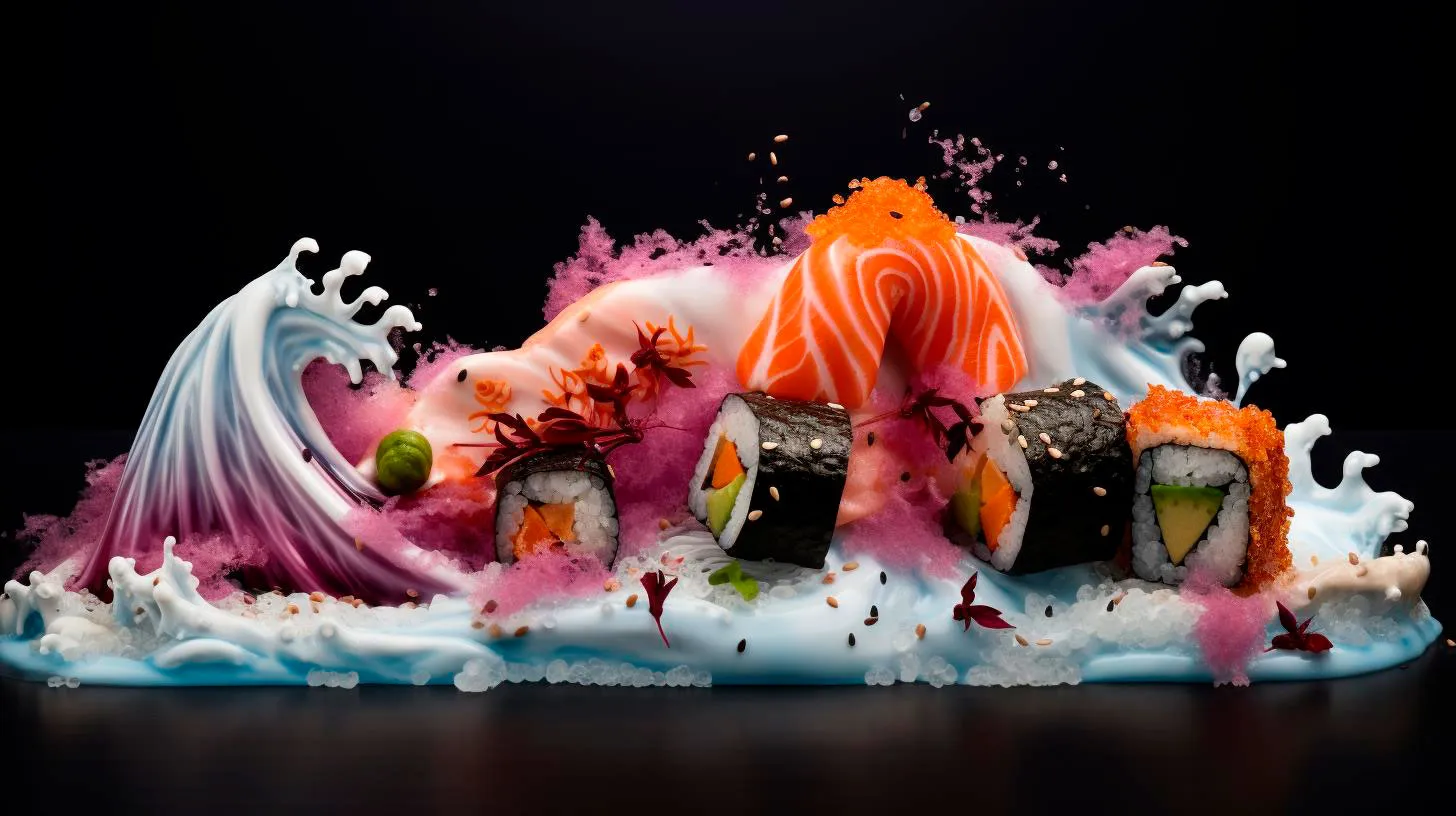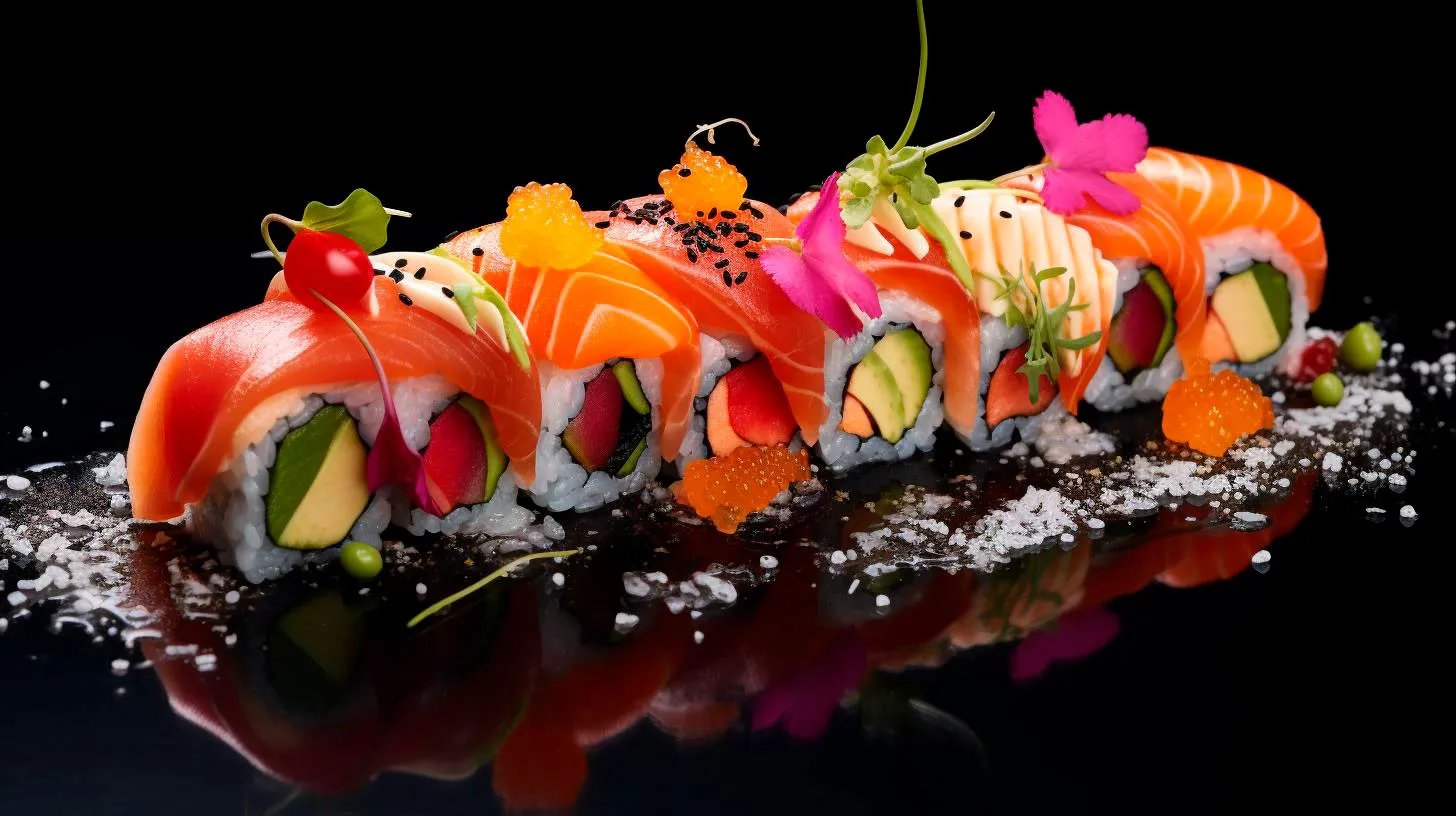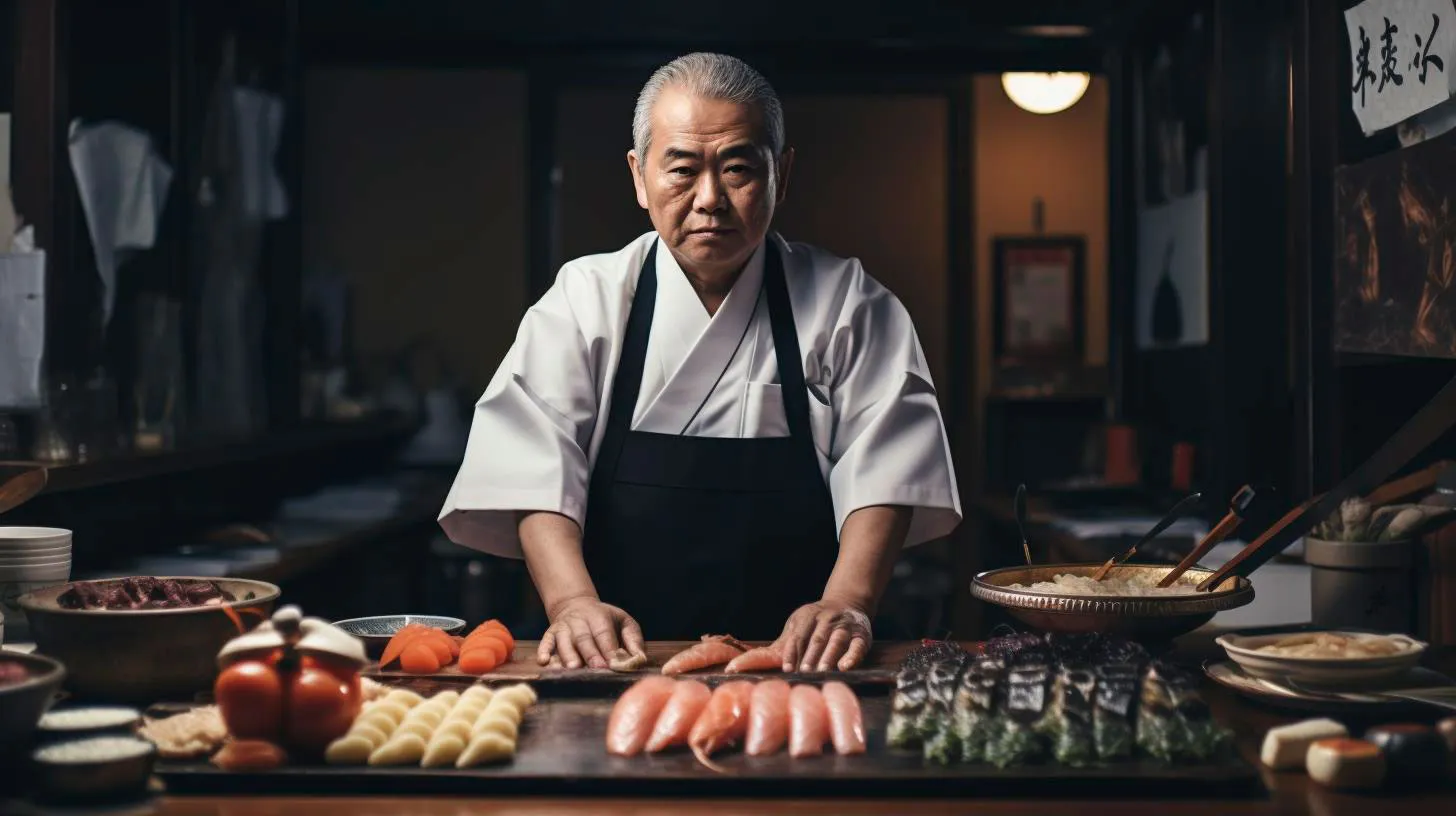A Cultural Feast: Discovering the Rich History Behind Japanese Cuisine and Celebrations
Japanese food not only tantalizes taste buds with its flavors but also tells the story of its people, making it a fascinating cultural exploration for food enthusiasts worldwide. Join us on a journey to discover the captivating history behind Japanese cuisine and celebrations.
The Evolution of Japanese Cuisine
Japanese cuisine, known as washoku, has evolved over centuries under the influence of different cultures, including China, Korea, and Europe. Despite these influences, Japan has successfully incorporated them into its own unique culinary identity.
Key Takeaways:
- Japanese cuisine, known as washoku, has been shaped by various cultural influences.
- The harmony of flavors, presentation, and seasonality are fundamental principles in Japanese cooking.
- Fresh, seasonal ingredients play a central role in Japanese cuisine.
One of the distinguishing features of Japanese cuisine is its emphasis on the harmony of flavors, presentation, and seasonality. The attention to detail is reflected in every aspect, from the arrangement of ingredients to the choice of tableware. In fact, the art of presentation, known as kaiseki, is an integral part of traditional Japanese cuisine.
Japan’s geographical location, with its coastline stretching over 29,000 kilometers, offers a diverse range of seafood. This availability of fresh ingredients has greatly contributed to the popularity of sushi, sashimi, and other seafood-based dishes. Alongside seafood, rice and noodles, such as soba and udon, also play a significant role in everyday Japanese meals.
The Culinary Influence of Festivities
Celebrations and festivals hold immense importance in Japanese culture, and food plays a central role in these events. Traditional ceremonies and annual festivals provide a deep insight into the country’s customs and beliefs. Let us delve into the culinary traditions associated with some of these celebrations.
Sakura (Cherry Blossom) Season
The arrival of spring marks the beginning of cherry blossom season in Japan. This is a time of celebration and appreciation for the fleeting beauty of these delicate pink flowers. Hanami, an age-old tradition, involves picnicking under the blossoming cherry trees. Bento boxes filled with an assortment of dishes, including onigiri (rice balls), sushi, teriyaki chicken, and matcha-flavored desserts, are enjoyed during this season.
Golden Week
Golden Week is a cluster of national holidays in Japan, which usually falls between the end of April and the beginning of May. Families often take this opportunity to travel or spend quality time together. Traditional treats like kashiwa-mochi (rice cakes filled with sweet bean paste and wrapped in oak leaves) and chimaki (sweet rice dumplings wrapped in bamboo leaves) are enjoyed during this festive period.
Obon Festival
Obon, a Buddhist custom, is a time to honor ancestors’ spirits. During this festival, families hold reunions and visit gravesites. A traditional dish called somen, thin wheat noodles served cold with a dipping sauce, is consumed. The noodles symbolize the threads that connect the living and the deceased.
Key Takeaways:
- Cherry blossom season in Japan is celebrated through the tradition of Hanami, which involves picnicking under blooming cherry trees.
- Golden Week is a time for family gatherings and traveling, often accompanied by traditional treats.
- The Obon Festival is a time to honor ancestors, with somen noodles holding symbolic significance.
The Global Influence of Japanese Cuisine
In recent decades, the popularity of Japanese cuisine has spread across the globe. Sushi restaurants, ramen shops, and teppanyaki grills have become staples in many cities worldwide. The rise of Japanese cuisine can be attributed to several factors.
Key Takeaways:
- Japanese cuisine’s popularity has grown globally due to its unique flavors and health benefits.
- Japanese food emphasizes fresh, seasonal ingredients and is often perceived as a healthier option.
- The artistry and precision in Japanese cooking have captivated people worldwide.
Japanese cuisine is not only delicious but also offers numerous health benefits. It is low in fat and high in nutrients, with an emphasis on fresh, seasonal ingredients. Sushi, in particular, is a favorite among health-conscious individuals as it provides a good source of lean protein and omega-3 fatty acids.
The Japanese practice of food artistry and attention to detail has also attracted people from around the world. From the beautifully arranged sushi rolls to the precise knife skills of sushi chefs, the craftsmanship involved in Japanese cooking is a visual delight that adds to the overall dining experience.
Conclusion
Japanese cuisine is a cultural feast that unveils its rich history through flavors and traditions. The evolution of washoku, influenced by various cultures, has resulted in a unique culinary experience. From cherry blossom picnics to Golden Week treats and Obon festival noodles, celebrations provide a glimpse into Japanese customs while enjoying the delicious dishes associated with each occasion. The global popularity of Japanese cuisine attests to its unique flavors, health benefits, and captivating presentation techniques.
So, the next time you savor a plate of sushi or slurp a bowl of ramen, take a moment to appreciate the cultural significance and centuries-old traditions behind these simple yet exquisite Japanese dishes.
Uncovering the Mystique: Exploring the Fascinating World of Japanese Holidays
In this article, we will embark on a virtual journey and uncover the mystique surrounding some of the most captivating Japanese holidays.
The Beauty of Hanami: Cherry Blossom Festival
Springtime in Japan paints the landscape with vibrant colors and ethereal beauty. One of the most famous holidays during this season is Hanami, the Cherry Blossom Festival. This centuries-old celebration marks the blooming of cherry blossoms and has become synonymous with the country’s affinity for nature. Here are some key takeaways from this mesmerizing Japanese holiday:
- Breathtaking Sceneries: Witnessing the delicate cherry blossoms in full bloom against Japan’s iconic landmarks such as Tokyo’s Ueno Park or Kyoto’s Maruyama Park is an awe-inspiring experience.
- Cultural Significance: Hanami is deeply rooted in Japanese history and signifies the transient nature of life, reflecting on the Buddhist concept of impermanence.
- Sakura-Inspired Delights: Indulge in seasonal treats like sakura-flavored mochi and sip on sakurayu, a delicately flavored cherry blossom tea.
The Spectacle of Tanabata: Star Festival
Legend has it that, once a year, the deities Orihime and Hikoboshi have their annual meeting across the Milky Way. This romantic tale of forbidden love is celebrated during Tanabata, the Star Festival. Held on July 7th, this holiday offers a fascinating insight into Japanese folklore and creativity. Here’s what you need to know about this captivating festival:
- Wishes and Dreams: During Tanabata, people write their wishes on colorful strips of paper, known as tanzaku, and hang them on bamboo branches. Engage in this heartwarming tradition and let your desires take flight.
- Street Festivities: Cities and neighborhoods across Japan come alive with vibrant parades, dazzling fireworks, and lively street performances, creating an atmosphere of joy and excitement.
- Ornate Decorations: Marvel at the intricately crafted bamboo displays adorned with paper decorations, representing the stars and the heartfelt wishes of those who celebrate this holiday.
The Tranquility of Obon: Festival of Souls
Obon, also known as the Festival of Souls, is a traditional Buddhist holiday that pays homage to ancestors and loved ones who have passed away. This spiritually significant occasion takes place during mid-August and offers a unique insight into the Japanese belief in the afterlife. Here are some intriguing aspects of this serene festival:
- Moribana Floral Arrangements: During Obon, families create moribana, floral arrangements that serve as an inviting path for ancestral spirits to find their way home. Participating in workshops or observing these exquisite arrangements is a delightful way to experience this cultural tradition.
- Lantern Lighting and Bon Odori: Streets and graveyards illuminate with the warm glow of lanterns, symbolizing guidance for the spirits. Additionally, the enchanting Bon Odori dance festivals are held nationwide, inviting everyone to join in the rhythmic celebration.
- Gatherings and Chochin Lanterns: Families come together to honor their ancestors and pay respects at ancestral altars. Chochin lanterns, with their soft glow, create a peaceful ambiance throughout homes during this time of remembrance.
The Merriment of Shogatsu: New Year Celebrations
Shogatsu, or New Year Celebrations, hold great significance in Japanese culture as they herald the arrival of a fresh beginning. These festivities are a blend of ancient customs and modern traditions, creating a joyful atmosphere nationwide. Delve into the traditions and experiences associated with Shogatsu:
- Visiting Temples and Shrines: Japanese people start the year by visiting temples and shrines, paying respect, and seeking blessings for health, luck, and prosperity. Join locals as they cleanse their hands and mouths at the chozuya and offer prayers at the main hall.
- Toshikoshi Soba: Enjoy a bowl of toshikoshi soba, a traditional noodle dish consumed on New Year’s Eve, symbolizing long life and prosperity. Savoring this dish at authentic soba restaurants is a delightful cultural experience.
- Osechi Ryori: Sample the exquisite osechi ryori, a selection of traditional New Year dishes displayed in beautiful lacquer boxes, representing wealth, health, and happiness for the coming year.
As we explore the captivating world of Japanese holidays, it becomes clear that these celebrations are far more than mere festivities. They are windows into the soul of Japan, offering visitors and locals alike a chance to immerse themselves in the beauty, history, and spirituality of this remarkable culture. Whether it’s the elegance of Hanami, the enchantment of Tanabata, the tranquility of Obon, or the merriment of Shogatsu, each holiday provides a unique opportunity to witness the rich tapestry of Japanese traditions and create lasting memories.
Delving into Tradition: Understanding the Significance of Japanese Festivals
From mesmerizing displays of fireworks to vibrant processions, each festival has its own distinctive charm. In this blog post, we will explore the significance of Japanese festivals and delve into the traditions that make them so fascinating.
The Allure of Japanese Festivals
Japanese festivals encompass a wide range of themes, including agricultural harvest celebrations, religious ceremonies, and historical commemorations. They serve as a way for communities to come together, honoring their shared identity and cultivating a sense of unity. These events provide an escape from the daily routine and offer an opportunity to experience the depth of Japanese culture. Here are some key aspects that make Japanese festivals truly captivating:
- Visual Spectacle: Japanese festivals are known for their visually stunning displays. Elaborate costumes, colorful decorations, and intricately designed floats create a feast for the eyes. These visual spectacles are often accompanied by traditional music, dance, and theatrical performances, adding to the overall enchantment of the festival.
- Traditional Cuisine: Food plays a central role in Japanese festivals, with various delicacies and local specialties being served. From street vendors offering delicious snacks to traditional feasts prepared for ceremonial purposes, the gastronomic experience during these festivals is a treat for all food enthusiasts.
- Historical Significance: Many Japanese festivals have deep historical roots, dating back centuries. These events provide a glimpse into the country’s past, allowing participants to connect with their ancestors and understand the traditions that have shaped Japanese society over time.
- Community Bonding: Japanese festivals bring people together, strengthening the bonds within a community. They foster a sense of belonging and promote social cohesion, as locals and visitors alike join hands in the celebration of shared customs and traditions.
Key Japanese Festivals and Their Significance
Let’s dive into some of the most renowned Japanese festivals and uncover the stories and traditions behind them:
1. Sakura Matsuri (Cherry Blossom Festival)
The Sakura Matsuri is celebrated in spring when cherry blossom trees across Japan burst into beautiful pink and white blooms. This festival embraces the transient nature of life and symbolizes renewal, hope, and the arrival of a new season. Key highlights of the festival include hanami (flower viewing) picnics, traditional music performances, and illuminated night-time displays.
2. Obon Festival
Obon is a summer festival dedicated to honoring the spirits of ancestors. It is believed that during this time, ancestral spirits return to visit their living relatives. Obon festivities typically involve traditional dances known as bon odori, in which participants wear yukata (light cotton kimono) and dance to rhythmic music. Lantern processions are also a common sight during this festival.
3. Gion Matsuri
Gion Matsuri is one of Japan’s most famous festivals, held in Kyoto throughout the month of July. This festival originated in the ninth century as a purification ritual to ward off epidemics. Today, it is a vibrant celebration featuring massive floats, street stalls, and traditional performances. The highlight of Gion Matsuri is the grand procession of the Yamaboko floats, which takes place on July 17th.
4. Tanabata Festival
The Tanabata Festival, also known as the Star Festival, traces its origins to a Chinese legend about two celestial lovers separated by the Milky Way. Celebrated on July 7th, this festival is a celebration of love and wishes. Colorful streamers and decorations adorn the streets, and people write their wishes on small pieces of paper and tie them to bamboo trees.
The Cultural Significance of Japanese Festivals
Japanese festivals hold profound cultural significance, acting as a bridge between the past and the present. They serve as a channel for preserving and passing on traditional customs and values to future generations. By participating in these festivals, individuals gain a deeper understanding of Japanese history, folklore, and religious beliefs.
Key Takeaways:
- Japanese festivals offer a unique window into the country’s cultural heritage.
- They showcase visually stunning displays, traditional cuisine, and historical traditions.
- Festivals strengthen community bonds and promote social cohesion.
- Some renowned Japanese festivals include Sakura Matsuri, Obon Festival, Gion Matsuri, and Tanabata Festival.
- These festivals hold cultural significance, preserving and passing on traditional customs to future generations.
Immerse yourself in the vibrant world of Japanese festivals and experience the magic of tradition coming alive. Discover the profound significance behind each festival and embrace the beauty of Japan’s cultural tapestry.
Embracing Sushi: Exploring Japan’s Beloved Culinary Tradition
In this blog article, we will delve into the world of sushi, exploring its history, cultural significance, and the artistry behind its creation.
A Brief History of Sushi
Sushi traces its origins back to ancient Japan. Initially, it was a method of preserving fish by fermenting it with rice. This enabled fishermen to store their catch for longer periods, making it an essential food source in a country surrounded by the sea. Over time, the fermentation process evolved, and people began consuming the rice along with the fish, leading to the birth of modern sushi.
However, it wasn’t until the 19th century that sushi as we know it today started to gain popularity. The discovery of refrigeration technology allowed for the creation of fresher sushi, with raw fish becoming a key ingredient. Sushi restaurants began to emerge in Tokyo, spreading this culinary delight across the nation and later to the world.
The Art of Sushi Making
Sushi making is an intricate process that requires precision, skill, and an understanding of the ingredients. The chef, known as an Itamae, must carefully select the freshest fish and the finest ingredients to create the perfect harmony of flavors. From filleting and slicing the fish to molding the rice and delicately wrapping it with seaweed, every step in the sushi-making process is essential.
The most common types of sushi include:
- Nigiri: Raw fish or seafood served on a small bed of vinegared rice.
- Maki: Rice and various ingredients rolled tightly in seaweed and sliced into bite-sized pieces.
- Sashimi: Slices of fresh raw fish or seafood served without rice.
- Temaki: Hand-rolled cones filled with rice, fish, vegetables, and other ingredients.
Each variety offers a unique taste experience, allowing sushi enthusiasts to explore a range of flavors and textures.
Sushi’s Cultural Significance
Beyond its culinary appeal, sushi reflects the values and aesthetics deeply ingrained in Japanese culture. Here are some key takeaways:
- Purity: Sushi emphasizes the appreciation of natural flavors and focuses on minimalistic presentations.
- Respect for Ingredients: Using only the freshest, high-quality ingredients showcases respect for nature’s bounty.
- Attention to Detail: The precision required in sushi making mirrors Japan’s commitment to perfection in all aspects of life.
- Seasonality: Sushi often incorporates seasonal ingredients, connecting to the rhythm of nature.
The Benefits of Sushi
Sushi not only tantalizes the taste buds but also offers several health benefits:
- Omega-3 Fatty Acids: Fish varieties commonly used in sushi, such as salmon and tuna, are rich in omega-3 fatty acids, promoting heart health.
- Low in Calories: Sushi is generally low in calories, making it an excellent option for those seeking a healthier diet.
- Good Source of Protein: With the protein-packed fish and nutrient-rich seaweed, sushi provides a substantial protein boost.
- Antioxidants and Minerals: Sushi’s ingredients, like seaweed and ginger, offer health-boosting antioxidants and minerals.
The Global Sushi Phenomenon
Sushi has transcended cultural boundaries, captivating the taste buds of people worldwide. Here are some fascinating statistics:
- In the United States, sushi consumption grew by over 28% between 2010 and 2019, with an estimated 100 million sushi servings sold annually.
- According to a survey, the global sushi market is expected to reach a value of $7.74 billion by 2023.
- Japan boasts over 45,000 sushi restaurants across the country, catering to both locals and tourists.
Conclusion
Sushi stands as a testament to Japan’s culinary prowess and cultural heritage. It’s a feast for the senses, intertwining flavors, textures, and aesthetics in each bite. Whether you’re a sushi enthusiast or new to this culinary delight, embracing sushi means embarking on a journey of exploration and savoring one of Japan’s greatest gifts to the world.



